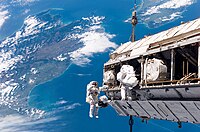Cape Campbell
Cape Campbell Māori: Te Rae-o-te-kōhaka | |
|---|---|
Cape | |
 | |
| 41°43′34″S 174°16′34″E / 41.726°S 174.2760°E / -41.726; 174.2760 | |
| Native name | Māori: Te Rae-o-te-kōhaka |


Cape Campbell, Te Rae-o-te-kōhaka in the Māori language,[1][2] is in Marlborough, New Zealand, on the northeastern coast of the South Island. It lies at the southern end of Clifford Bay, 15 kilometres (9 mi) northeast of Ward, and 42 kilometres (26 mi) southeast of Blenheim. Cape Campbell lies close to the salt works at Lake Grassmere.
It is the third-easternmost point of the South Island, at a longitude of about 174o16.5' East. (The two easternmost points are West head (it is the western shore of the opening to Tory Channel - the opposing shore being on Arapaoa Island), and Cape Jackson (between the entrances to Queen Charlotte Sound and Port Gore), both at a longitude of 174o19' east.)
It was named by Captain James Cook after Captain (later Vice-Admiral) John Campbell, who had been a strong supporter of Cook's as Observer for the Royal Society.[3]
The Cape Campbell Lighthouse has guided ships rounding the cape since 1870.
The third night of the Cape Campbell Track is spent at Cape Campbell, where the lighthouse keepers once stayed. When walking the Cape Campbell Track, a four-day private walking track, walkers retrace part of the original pack track used by the lighthouse keepers to obtain vital supplies from the Flaxbourne Station Homestead where the first telegraph office[clarification needed] stood.
Climate
| Climate data for Cape Campbell (1991–2020) | |||||||||||||
|---|---|---|---|---|---|---|---|---|---|---|---|---|---|
| Month | Jan | Feb | Mar | Apr | May | Jun | Jul | Aug | Sep | Oct | Nov | Dec | Year |
| Mean daily maximum °C (°F) | 18.8 (65.8) | 18.8 (65.8) | 17.7 (63.9) | 15.9 (60.6) | 14.2 (57.6) | 12.3 (54.1) | 11.4 (52.5) | 11.8 (53.2) | 13.1 (55.6) | 14.5 (58.1) | 15.8 (60.4) | 17.5 (63.5) | 15.2 (59.3) |
| Daily mean °C (°F) | 16.4 (61.5) | 16.6 (61.9) | 15.5 (59.9) | 13.8 (56.8) | 12.2 (54.0) | 10.2 (50.4) | 9.4 (48.9) | 9.8 (49.6) | 11.0 (51.8) | 12.1 (53.8) | 13.4 (56.1) | 15.2 (59.4) | 13.0 (55.3) |
| Mean daily minimum °C (°F) | 14.1 (57.4) | 14.3 (57.7) | 13.4 (56.1) | 11.7 (53.1) | 10.1 (50.2) | 8.1 (46.6) | 7.4 (45.3) | 7.7 (45.9) | 8.8 (47.8) | 9.8 (49.6) | 11.1 (52.0) | 12.9 (55.2) | 10.8 (51.4) |
| Average rainfall mm (inches) | 41.5 (1.63) | 37.0 (1.46) | 37.1 (1.46) | 36.8 (1.45) | 46.9 (1.85) | 63.1 (2.48) | 59.1 (2.33) | 44.7 (1.76) | 44.2 (1.74) | 39.2 (1.54) | 36.2 (1.43) | 40.3 (1.59) | 526.1 (20.72) |
| Source: NIWA[4] | |||||||||||||
References
- ^ A.H, Carrington (1934). "Chapter 5 & 22". Ngaitahu, the story of the invasion and occupation of the South Island. Alexander Turnbull Library, Wellington, New Zealand.
{{cite book}}: CS1 maint: location missing publisher (link) - ^ Hoani, Pitini-Morera. He korero mo Tuteurutira raua ko Hinerongo [Manuscripts Collection. Ngāi Tahu Archive]. Te Rūnanga o Ngāi Tahu. p. 4.
- ^ Beaglehole, John Cawte. The Life of Captain James Cook, Stanford University Press, Stanford, California (1974).
- ^ "CliFlo – National Climate Database : Cape Campbell Aws". NIWA. Retrieved 19 May 2024.
External links

- Cape Campbell[permanent dead link] at Land Information New Zealand.
- v
- t
- e
| Marlborough Sounds | |
|---|---|
| Blenheim | |
| Wairau-Awatere |
| Islands |
|
|---|---|
| Bodies of water |
|
| Landforms |
|
 | This Marlborough Region-related geography article is a stub. You can help Wikipedia by expanding it. |
- v
- t
- e











